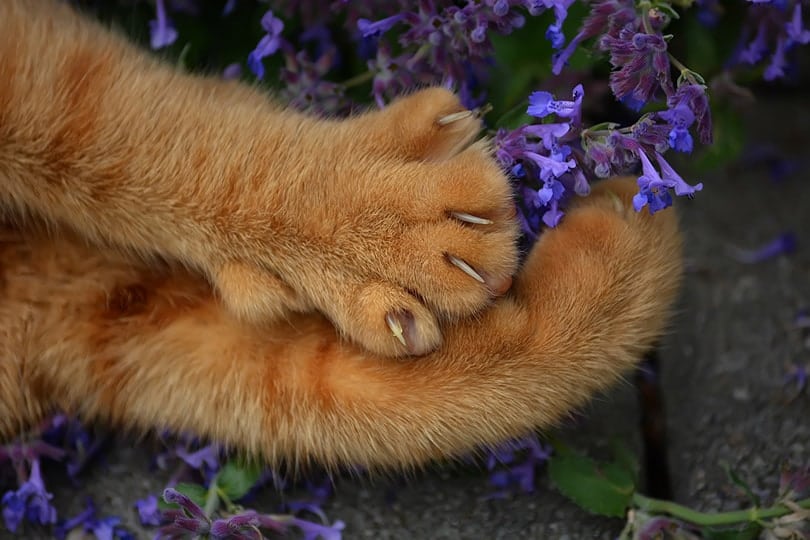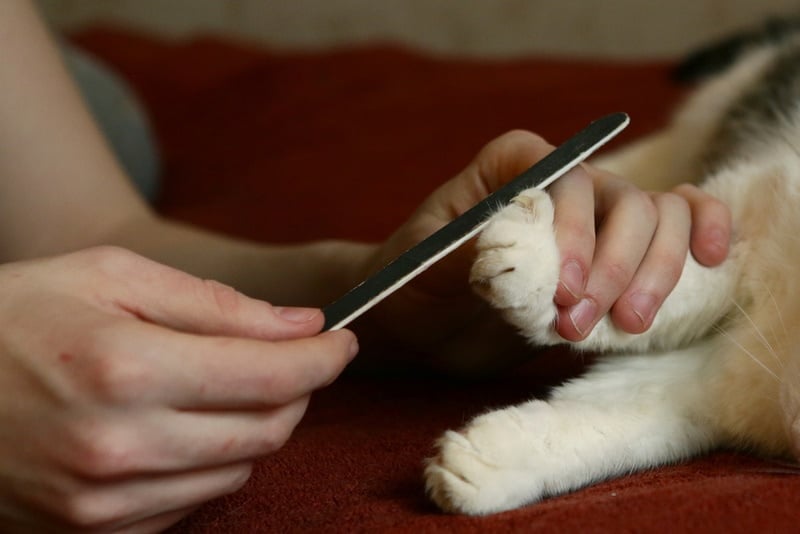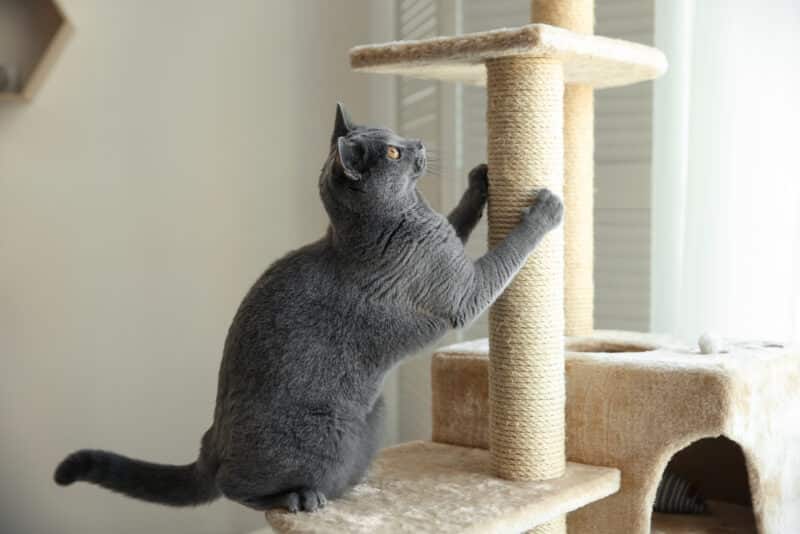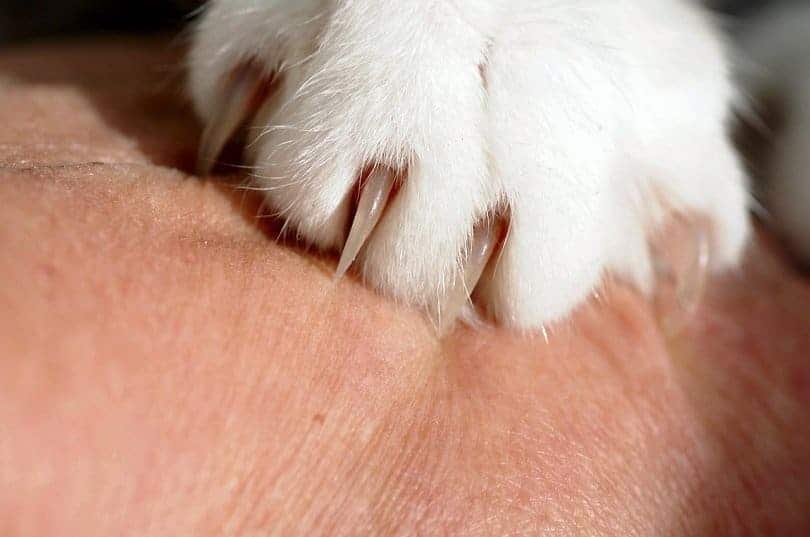The post Cat Pedicures: What’s Involved? Vet-Approved Facts & Explanation by Ashley Bates appeared first on Catster. Copying over entire articles infringes on copyright laws. Chances are you’ll not concentrate on it, but all of those articles were assigned, contracted and paid for, so they don’t seem to be considered public domain. Nevertheless, we appreciate that you simply just like the article and would find it irresistible should you continued sharing just the primary paragraph of an article, then linking out to the remaining of the piece on Catster.com.
Click to Skip Ahead
Overview
What Is a Pedicure for Cats?
Advantages & Downfalls
Can You Give Your Cat a Pedicure at Home?
Is Nail Trimming Really Mandatory?
Easy methods to Protect Homes from Cat Claws
Should You Declaw Your Cat?
Our kitties might need a little bit extra love within the nail department. These lethal murder mittens can do quite numerous damage. In the event you’ve shared your property with a feline, you already know just how much it could impact your belongings—and yourself! Too long claws can even cause pain and other issues in your cat.
So, when it comes to pet pampering, what’s a pedicure like for cats? Does a cat pedicure involve the identical things it does for humans? Or is it only a process where the claws grow to be duller and fewer equipped for damage? Let’s discover what a cat pedicure entails!
Overview of a Cat’s Nails
In the event you closely examine your cat’s claws, you’ll notice that the tip is translucent, and the “quick” portion is visible as you look down the nail toward the toe.
The nail is a translucent portion that’s the upper 1/3 of the claws, roughly. The fast is the darker or pink portion of the nail—which comprises blood vessels and nerves. That’s the reason it is going to bleed vigorously at the short should you clip too far down.
It’s crucial that you will have solid knowledge of where the short ends—especially if there may be trimming involved.
What Do Cat Claws Do?
Cat claws are an incredibly essential feature anatomically. They serve many purposes that profit your cat’s on a regular basis living.
Cat claws can assist with:
- Climbing
- Scratching
- Balance
- Walking
- Digging
- Covering waste
So, you may see how they play a significant role.
 Image Credit: Naturell, Pixabay
Image Credit: Naturell, Pixabay
What Is a Pedicure for Cats?
You could be imagining your cat sitting upright with their feet in a soak tub and head wrapped up in a towel, wearing their best bathrobe. But after all, this isn’t the case.
A pedicure (or manicure) for cats is just a elaborate nail trim. Some people select or must trim their cat’s claws repeatedly, while others let this go untended. In the event you take your cat to the groomer, the nails are likely an area on the body that can get attention.
How Are Pedicures on Cats Performed?
A pedicure for cats is carried out fastidiously by trained professionals. It’s all a part of the grooming process! The groomer (or groomers) will make your cat comfortable before trimming so it alarms them as little as possible.
With luck, the groomer can snip, snip, snip—and be done. For more rambunctious cats, the method might take a little bit longer.
Who Gives Cats Pedicures?
Skilled groomers are often those liable for giving cats pedicures. Nevertheless, you may perform a basic nail trim at home should you learn what to do and the best way to do it appropriately. In the event you plan to do it yourself, have a helper, and you’ll want to ask your vet or knowledgeable groomer to point out you the way.

Advantages of Pedicures for Cats
If you will have a young, lively kitty, and so they have loads of scratching posts, they could not need regular pedicures. Nevertheless, senior and fewer lively cats, especially those with issues like arthritis, will need regular nail trims to assist keep their claws in tip top health.
In case your cat’s nails get too long they could get caught on carpets and blankets. They can even begin to curve and grow round into their paw pads causing numerous pain in your cat. After all pedicures mean your cat’s nails are less sharp as well in order that they do less damage across the home and in the event that they unintentionally catch you during an intense play session!
Downfalls of Pedicures for Cats
Just like every upside, there shall be some cons to think about. First, pedicures might be very stressful in your cat. You could be counting down the minutes until you may chill out by getting your toes and nails done. Nevertheless, cats won’t feel the identical way.
After just a few trips, your cat can acclimate (like going to the vet) and it’s at all times best to get them used to having their paws handled from a young age. Nevertheless, cat pedicures might be very tough to handle, as an unfamiliar person is touching a sensitive a part of the cat’s body. Plus, what cat actually likes being restrained and staying still?
 Image Credit: Lapina, Shutterstock
Image Credit: Lapina, Shutterstock
Can You Give Your Cat a Pedicure at Home?
In the event you feel confident enough to perform the duty, you may freely give your cat a pedi from the comfort of your personal home. The truth is, some anxious or uncomfortable felines might prefer your skills over a trained skilled based on comfort alone.
First, you need to get your cat an acceptable sized, pet-specific form of nail clippers. Pet nail clippers are designed to place pressure on all parts of the nail, making a clean cut.
Before you even start the trim, have an individual help to softly restrain your kitty in order that they don’t hurt themselves otherwise you—especially if it’s your first time.
Is Nail Trimming Really Mandatory?
Your cats can file their nails naturally. Within the wild a cat would wear down their nails by running, hunting, climbing and scratching. Scratching could be an easily neglected a part of cat behavior, however it’s one which is so instinctual for them. They require scratching for nail sharpening, shedding, and muscle-building. Cats also scent mark after they scratch. Indoor and older cats usually tend to have longer claws and require nail cutting.
On average, it’s beneficial to examine your cat’s nails once every 2 to three weeks and trim them if essential.
But there are also other ways to assist keep your cat’s nails as healthy as possible, in addition to protecting your property from cat claws!

Easy methods to Protect Homes from Cat Claws
Protecting your property means giving your cat appropriate outlets for his or her natural scratching behavior, in addition to keeping their nails in good condition.
1. Proper Scratching Materials
Purchasing scratching materials is a necessary a part of being a cat owner. It is an element of your cat’s natural instinct to scratch and claw at materials.
Some cats need to claw greater than others, so if you will have a multi-cat household, ensure to supply quite a lot of materials to maintain them completely satisfied. Probably the most common materials available on the market include sisal rope, sisal fabric, cardboard, and carpet.
Each has its advantages, and you may find that your cat prefers one to the opposite. Some cats like vertical scratching posts and others prefer horizontal.
 Image Credit: Recent Africa, Shutterstock
Image Credit: Recent Africa, Shutterstock
2. Pheromone sprays
Using pheromone sprays can encourage your cat to make use of a scratching post somewhat than furniture and carpets.
3. Keep Them Lively
The more your cat plays and runs, the more likely they’re to remain in shape and naturally wear down the guidelines of their claws without the necessity for such regular nail trims. In case your cat is older and battling mobility, seek the advice of together with your vet for advice.
4. Claw Covers
Claw covers can be found, these are lightweight caps that are glued over your cat’s claws and are used as a method to stop your cat scratching furniture. Although a far more humane option than declawing, they are usually not without issues. They might be difficult to use properly, often don’t stay in place and require regular monitoring and reapplication every 4-6 weeks. Many cats don’t like them, meaning they cause stress and anxiety. Some can prevent a cat from retracting their nails properly and so they may cause damage to the nail if left on for too long. They need to never be utilized in cats that go outside and we recommend talking to your vet should you are considering them to ensure they’re a superb alternative in your cat.

Should You Declaw Your Cat?
Declawing remains to be an enormous debate. Even throughout the Nineties, this practice was pretty commonplace within the US. In lots of other countries declawing is either banned or considered unethical. It’s a surgical process by which the claw is removed by amputating the last bone of every toe on a cat’s paw. While this might appear to be a smart solution to the issue, it’s actually very damaging for several reasons.
Declawing is an incredibly invasive procedure. It’s comparable to you getting your fingers cut off on the last knuckles. This surgery is unnecessary, costly, and, many would argue, inhumane.
First, your cat’s natural instinct is to claw. Once you remove the claws, they may still need to need or scratch, but they shall be unable to accomplish that. This couldn’t cause some confusion and might even make your cat unhappy.
Declawing might be painful years after the surgery is complete. Unfortunately, studies have revealed that a big percentage of declawed cats experience some level of pain intermittently or consistently and this may affect their behavior with increased incidence of aggression and inappropriate elimination.
Many vets will not perform this surgery as an elective procedure and the American Veterinary Medical Association discourages the elective declawing of cats and encourages the usage of alternatives.
 Image Credit: Jupri, Pixabay
Image Credit: Jupri, Pixabay

Conclusion
So, now you already know exactly the best way to give your cat a pedicure—or what it means if a groomer does it. What do you think that? Does it sound like a superb plan to totally pamper your kitty on the following trip to the groomer, or will you permit the murder mittens alone?
Sources
- https://www.petplace.com/article/cats/pet-care/pawdicures-the-latest-thing-in-kitty-pampering
- https://kritterkommunity.com/the-anatomy-of-a-cat-claw/
- https://heartforanimals.org/cat-manicure/
- https://journals.sagepub.com/doi/10.1177/1098612X17705044
- https://www.avma.org/javma-news/2020-03-01/avma-revises-declawing-policy
- https://www.pdsa.org.uk/what-we-do/blog/vet-qa-how-do-i-trim-my-cat-s-claws
Featured Image Credit: 135pixels, Shutterstock
The post Cat Pedicures: What’s Involved? Vet-Approved Facts & Explanation by Ashley Bates appeared first on Catster. Copying over entire articles infringes on copyright laws. Chances are you’ll not concentrate on it, but all of those articles were assigned, contracted and paid for, so they don’t seem to be considered public domain. Nevertheless, we appreciate that you simply just like the article and would find it irresistible should you continued sharing just the primary paragraph of an article, then linking out to the remaining of the piece on Catster.com.


